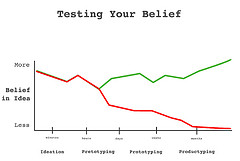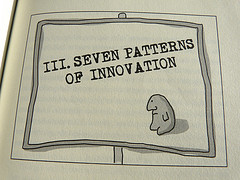Browse by Tag
- "Real" Innovation (2)
- Alignment (6)
- Business Innovation (9)
- Business Plan (2)
- Business Plans (1)
- Creativity (24)
- Critical Success Factors (4)
- Entrepreneurship (9)
- Global Competiveness (4)
- Human Side (11)
- India (1)
- Innovation (4)
- Innovation Consulting (18)
- Innovation Killers (3)
- Innovation Management (18)
- Innovation Tools (17)
- Innovation Training (24)
- Innovations (7)
- Inventions (16)
- IT Innovation (1)
- Leaders (5)
- Leadership (20)
- Leadership Development (13)
- Organizational Leadership (2)
- Organizational Strategy (20)
- Personal Values (6)
- Prediction (5)
- Strategic Innovation (38)
- strategic planning process (4)
- Strategy (3)
- Training (1)
- Vision (5)
- Weekly Dose (8)
Posts by Month
- 2014
- 2013
- 2012
- 2011
- 2010
- 2009
- 2008
- 2006
You Can Build Your Own Innovation Engine
Yes, You Can Build Your Own Innovation Engine
Jatin Desai was interviewed for the Propelling Marketing Ideas blog about different aspects of Innovation. He answers these questions.

1. What is innovation?
2. Can innovation be measured? If so, how?
3. Besides product innovation, where else can a company innovate?
4. How does a company link innovation to their current business strategy?
5. How can a company innovate together with their customers?
Click here to read the interview.
8 Environmental Factors Creating Organizational Friction
Mechanical organizations are machinelike and effective when the environmental factors are predictable. But in today's world, it is impossible for such companies to manage the type of change occurring around them. As an example, here are eight types of environmental factors creating friction at all levels:
1. Technological factors. Fast new technologies causing rapid product obsolescence.
2. Economic factors. Unpredictable prices, costs, currency rates, interest rates, taxes.
3. Competitive factors. Aggressive, global, highly innovative, threats from niche players, competitors who are also customers and partners.
4. Labor factors. Increased scarcity of skilled professionals, mobile workforce, increased employee benefits expenses, more reliance on contract labor.
5. Resource factors. Scarcity, increasing specialization, unknown sources of supply, rapid obsolescence.
6. Customer factors. More demanding, complex, market fragmentation, narrow market segments, increased acquisitions costs.
7. Legal and regulatory factors. More aggressive, increased costs, unlimited product liability, growing compliance on free and fair trade.
8. Global factors. Real-time communications, production, distribution, logistics, sophistication of supply chain partners, customers and competitors located anywhere in the world, outsourcing pressures, international strategic alliances.
Mechanical Engine Versus Innovation Engine
These and many other issues are generating additional pressures for today's employees and managers in an already mechanistic and heartless environment within organizations. Due to these pressures, leaders have focused primarily on survival, with little focus on achieving sustained growth.

Is there a way out? Yes.
The primary way out is to evolve today's strategic operating model based on mechanistic, bureaucratic, and hierarchical practices (machinelike) toward an innovation-driven execution model.
Machinelike companies focus on bottom-line performance as the primary measurement for most management decisions, at any cost. Focus is on the short-term. These firms are weak because they are inefficient at managing their future.
Experience shows that the companies that build an innovation engine are more adaptable, flexible, fast, aggressive, innovative, and able to adjust to dynamic, threatening, and a complex external environment. These firms do not take the external environment as a given. Instead, they embrace it as a challenge and act as an agent of change, leading customers, creating new markets, and rewriting the rules of the industry they serve.
Performance Wheel Versus Innovation Wheel
To better understand the two machines, I'd like to use the metaphor of a bicycle. The bicycle represents an engine. The fuel comes from a human being riding it, instead of gasoline/petrol we use in other machines.
The athlete riding is similar to the leadership team members who models the values, beliefs, skills, and behavior of the organization. The bike frame represents the organizational form-firm strategy, structure, processes, and culture.
The performance wheel is the back wheel, which represents practices for achieving organizational effectiveness, efficiencies, and stakeholder management and includes customers, suppliers, shareholders, and partners. This wheel is the source of power and acceleration for individuals, teams, and the organization.
The innovation wheel, the front wheel, represents direction and clarity about the future. It is the organization's capacity for two very important competencies: corporate entrepreneuring ( intrapreneurship) and strategic renewal. The front wheel is the first to sense new opportunities to maneuver based on the eight (internal and external) environmental factors listed previously. The innovation wheel provides the first experience of the environmental factors, the road ahead, and the ability to conduct quick experiments in the turbulent race.
Misplaced Organizational Focus
Unfortunately, today's organizations primarily focus on the back wheel to achieve bottom-line optimization, which is why it is called the performance wheel. The values of this wheel calls for power and acceleration, but if the motives of the organizational athletes (leaders at the top) are flawed, results can lead to disaster-we have seen plenty of examples. The company may move in wrong directions, lose focus on what is ahead, not make fast enough decisions to alter the path, not be sensitive to environmental conditions, and watch others pass by.
Without the front wheel of innovation, the organization has little to no strategic lens for what is possible ahead and what directional decisions to make because the front wheel is missing or ill functioning, most teams at the top make the same decisions as their competitors. The goal of this wheel is to turn the highly mechanistic athlete into an innovative competitor who can easily gather new knowledge, experiment fast, and adapt quickly to outmaneuver other competitors in the race.
Most organizations are pretty good at operating the back wheel; they just need to improve management practices and associated discipline. For managers, as practitioners, the back wheel is a safe zone because the artifacts used are metrics, scorecards, and quantitative analysis-hard stuff. For the front wheel, though, the primary values are qualitative, abstractions, and the intuition to make midcourse corrections. Due to emphasis on performance, managers lack experience operating the front wheel-the innovation wheel.
The Takeaway
The best performing companies evolve from machinelike short-term focus organizations to an innovation execution long-term focus.
It's Your Turn. Please comment below.
1. Is your organization focused on the performance wheel or the innovation wheel?
2. What steps has your organization taken to be more innovative and less mechanistic?
3. Which of the outlined Environmental Factors do you feel are most important?
Innovation Isn't Just About New Products
 The innovation mindset isn't just about product innovation.
The innovation mindset isn't just about product innovation.
Some organizations have focused on product innovation for so long they don't know how to innovate in any other areas. For example, in 2010, Microsoft -one of the world's best product innovators for the last two decades - launched a social phone called Kin. The product was a complete disaster. Within six weeks of the launch, the entire product group was shut down, and, according to their earnings reports, Microsoft took at least a $240 million write-off.
How could such a great product innovator strike out so fast? In today's climate, it happens to the best.
Most organizations focus on building short-term product innovation engines. However, most products have little sustainable competitive advantage and never generate a profit; those that do are often quickly copied by the competition, negating any long-term advantage. The result: a significant investment in product development, without a commensurate return on investment.
To achieve sustainable growth, companies must better integrate product innovation with business model, process, and service innovations.
Pioneer Innovation in Action - Consumer Products Case Study
Global Consumer Products Companies are faced with three choices on how to compete in the new products and services arena. They can be a Pioneer, Fast Follower or Imitative.
The Consumer Products industry is the fastest of all industries. Unlike Financial Services or BioPharma, the industry must innovate new products and services every six months. At the same time, it must respond to new business models driven by automation and globalization at the speed of light. The primary way to grow is through building Innovation Engine capabilities across the value chain.
Let's take a look at how an $18 Billion company with 18,000 employees, mostly in the US, evolved their Innovation Strategy.

Client Situation:
A global multi-billion dollar fast moving consumer goods (FMCG) company, had successfully instituted a "fast-follower" strategy. Growth had come through organic operations and few small acquisitions in existing categories in adjacent FMCG fields.
The leaders in the industry had refocused their efforts on competing through innovation, speeding up the rate of new product introductions. Retailers had emerged as the leaders of "fast following" strategy. The client wanted to transform into an innovation leader or Pioneer.
Four Phase Innovation Approach:
Innovation Diagnostics: The innovation assessment highlighted critical issues within the organization that needed to be addressed immediately.
Program Pilot: In Phase II, the capability building tools were created, tested and tailored to the company.
Full Implementation: In Phase III, the capability building was started in three different strategic business units, concurrent with creation of the wider implementation plan.
Enterprise Rollout: In Phase-IV, the Innovation Approach was embedded across all enterprise systems and expanded across supply chain and open innovation platforms.
Innovation Teams Receive Venture Board Approval
Business Strategy must inform Innovation Strategy. The Consumer Products Company established a Venture Board to vet the ideas and seed them with $10 million in capital.
The goal was to find breakthrough ideas throughout the enterprise. The Innovation Funnel was opened wide. Innovation Teams worked the ideas into business concepts. 25% of the business concepts were initially funded. The balance of the business concepts was placed in an Innovation Database for future company use.
Results Are The Measure of Innovation Success
How did applying the DeSai Body of Knowledge impact the company?
- DeSai helped the client develop a range of new high value ideas with historically high concept testing results.
- 5-7 year innovation roadmaps and pipelines in three strategic business units were created.
- To achieve the desired growth path, the client initiated relationships with potential innovation partners and gained new insights from external partners.
- Several innovation processes were instituted: idea generation and management, innovation teams and charters, and a high-level blueprint for building an innovation organization.
- The client witnessed a cultural change within the organization. Six highly motivated innovation teams were formed creating a range of success stories, and spontaneous adoption of the approach within the organization.
- The client has attributed a revenue increase of 12.5% directly from the new innovation venturing process.
- The pipeline of ideas being tested are expected to begin, at least, three new business ventures every year with a potential of $500 million in revenue within the first three years after launch.
The Takeaway
Fast moving industries need a developed Innovation Process that can continue to deliver new products, services and growth to the company.
Your Turn. Please comment below.
- Does your company employ a Pioneer, Fast Follower or Imitative strategy?
- How does your company vet and seed promising business concepts with funds?
- How full is your Innovation Funnel?
8 Innovation Culture Books Worth Reading
I have spent most of my career involved in the Innovation arena. For long-term sustainable and continuous growth, a company must build a climate and culture of innovation. The recommended books in this category covers topics such as the role of leaders, how to design organizational structures and inspire teams to reach for the very best solutions.

 Managing Innovation, Design and Creativity by Bettina Von Stamm
Managing Innovation, Design and Creativity by Bettina Von Stamm
Innovation is the major driving force in organizations today. With the rise of truly global markets and the intensifying competition for customers, employees and other critical resources, the ability to continuously develop successful innovative products, services, processes and strategies is essential. While creativity is the starting point for any kind of innovation, design is the process through which a creative idea or concept is translated into reality. Managing Innovation, Design and Creativity, 2nd Edition brings these three strands together in a discussion built around a collection of up-to-date case studies.
 Positive Turbulence: Developing Climates for Creativity, Innovation, and Renewal (J-B CCL (Center for Creative Leadership)) by Stanley S. Gryskiewicz)
Positive Turbulence: Developing Climates for Creativity, Innovation, and Renewal (J-B CCL (Center for Creative Leadership)) by Stanley S. Gryskiewicz)
Can your company manage even encourage turbulence in ways that actually strengthen its competitive stance? Absolutely. In this work, top organizational psychologist Stanley Gryskiewicz argues that challenges to the status quo can be catalysts for creativity, innovation, and renewal and shows leaders how they can keep their company on the competitive edge by embracing a process he calls Positive Turbulence. Developed through the author's work with many of the world's leading companies over the course of thirty years, Positive Turbulence delivers proven methods for creating an organization that continuously renews itself through the committed pursuit of new ideas, products, and processes.
 Closing the Innovation Gap: Reigniting the Spark of Creativity in a Global Economy by Judy Estrin
Closing the Innovation Gap: Reigniting the Spark of Creativity in a Global Economy by Judy Estrin
Named one of the "Best Books on Innovation, 2008" by BusinessWeek magazine
Does innovation come about by luck or hard work? Is it a flash of inspiration or the result of careful management? Are innovators born or taught? In Closing the Innovation Gap, Judith Estrin provides the answers to these and other questions critical to our future. A technology pioneer and business leader, Estrin describes what will be required to reignite the spark of innovation in business, education, and government ensuring our long-term success in the global economy.
Innovation does not occur in a vacuum. It grows from the interplay of three drivers of creative change research, development, and application. Estrin calls this dynamic the "Innovation Ecosystem," explaining how these communities work together to create sustainable innovation.
 The Elegant Solution: Toyota's Formula for Mastering Innovation by Matthew E. May and Kevin Roberts
The Elegant Solution: Toyota's Formula for Mastering Innovation by Matthew E. May and Kevin Roberts
One million. That's how many new ideas the Toyota organization receives from its employees every year. These ideas come from every level of the organization from the factory floors to the corporate suites. And organizations all over the world want to learn how they do it. Now Matthew May, Senior Advisor to the University of Toyota, reveals how any company can create an environment of every day innovation and achieve the elegant solutions found only on the far side of complexity. A tactical guide for team-based innovation, THE ELEGANT SOLUTION delivers the formula to the three principles and ten practices that drive business creativity. Innovation isn't just about technology it's about value, opportunity and impact. When a company embeds a real discipline around the pursuit of perfection, the sky is the limit. Dozens of case studies (from Toyota and other companies) illustrate the power and universality of these concepts; a unique 'clamshell strategy' prepares managers to ensure organizational success. At once a thought-shaper, a playmaker, and a taskmaster, THE ELEGANT SOLUTION is a practical field manual for everyone in corporate life.
 Swarm Creativity: Competitive Advantage through Collaborative Innovation Networks by Peter A. Gloor
Swarm Creativity: Competitive Advantage through Collaborative Innovation Networks by Peter A. Gloor
Swarm Creativity introduces a powerful new concept-Collaborative Innovation Networks, or COINs. Its aim is to make the concept of COINs as ubiquitous among business managers as any methodology to enhance quality and competitive advantage. The difference though is that COINs are nothing like other methodologies. A COIN is a cyber-team of self-motivated people with a collective vision, enabled by technology to collaborate in achieving a common goal n innovation-by sharing ideas, information, and work. It is no exaggeration to state that COINs are the most productive engines of innovation ever. COINs have been around for hundreds of years. Many of us have already been a part of one without knowing it. What makes COINs so relevant today, though is that the concept has reached its tipping point-thanks to the Internet and the World Wide Web. This book explores why COINS are so important to business success in the new century. It explains the traits that characterize COIN members and COIN behavior. It makes the case for why businesses ought to be rushing to uncover their COINs and nurture them, and provides tools for building organizations that are more creative, productive and efficient by applying principles of creative collaboration, knowledge sharing and social networking. Through real-life examples in several business sectors, the book shows how to leverage COINs to develop successful products in R & D, grow better customer relationships, establish better project management, and build higher-performing teams. In short, this book answers four key questions: Why are COINs better at innovation? What are the key elements of COINs? Who are the people that participate in COINs and how do they become members? And how does an organization transform itself into a Collaborative Innovation Network?
 Leadership for Innovation: How to Organize Team Creativity and Harvest Ideas by John Eric Adair
Leadership for Innovation: How to Organize Team Creativity and Harvest Ideas by John Eric Adair
New ideas and new ways of doing things are one of the main ingredients in sustained business success, but how does one create the right conditions for innovation?
Leadership for Innovation will help readers create an innovative climate that encourages the development of new products and services. Drawing upon real-life examples including Google, Honda and 3M, John Adair sets out practical ways for bringing about change in organizations. As well as identifying the characteristics of an innovative organization, he discusses key topics such as organizing for team creativity; motivating creative people, how to build on ideas and how to be a creative leader and team member.
Leadership for Innovation shows how to inspire teams to go one step further and generate the kind of ideas that are the foundations of future success.
 The Leader's Guide to Lateral Thinking Skills: Unlocking the Creativity and Innovation in You and Your Team by Paul Sloane
The Leader's Guide to Lateral Thinking Skills: Unlocking the Creativity and Innovation in You and Your Team by Paul Sloane
In this lively, energetic guide to leadership, highly acclaimed author, trainer and presenter Paul Sloane shares dynamic techniques that are sure to unleash creative energy and lateral thinking. Packed with real-life examples, practical methods and lateral thinking exercises, the book encourages you to question your assumptions and develop new ideas with a variety of techniques. Lateral thinking puzzles at the end of each chapter illustrate the importance of thinking outside the box.
 Giant Steps in Management: Innovations that change the way you work by Julian
Giant Steps in Management: Innovations that change the way you work by Julian
Birkinshaw and Michael J. Mol
Succinctly but completely describing 50 of the most important management innovations in the past 150 years, Mol and Birkinshaw educate us on where and how managerial innovations arise. An amazing overview of the management practice landscape, Giant Steps in Management provides invaluable insights for organizations seeking better performance. Jeffrey Pfeffer, Professor, Graduate School of Business, Stanford University Never has it been more important for managers to innovate the way they manage. As this book so powerfully shows management innovation advances in how we manage is a secret weapon in the search for competitive advantage. With a fantastic compendium of the 50 most crucial management innovations this book will surprise, inform and inspire any manager who believes that they need to innovate the way they manage. Lynda Gratton, Professor of Management Practice, London Business School Author of Hot Spots; why some teams, workplaces and organisations buzz with energy and other's don't. "This book might be called 'Everything you wanted to know about management, but were afraid to ask'. It's an invaluable quick guide to the entire arsenal of techniques and models, and I recommend it to anyone who takes the job of management seriously. It is typical of the authors work, in that it is clear, crisp, and useful." Tim Brooks, Managing Director, Guardian News & Media Limited INNOVATION IS AT THE HEART OF GREAT MANAGEMENT How do you manage? What skills, ideas, tools and techniques do you use? Have you always used them? Think about it: how we manage organizations and ourselves is in a constant state of evolution. Nothing about the way you work today is forever. Managers are always trying new things, different approaches. There are management innovations underway all the time in large organizations. Many fail. Some work. A few make history. The most valuable ones are picked up and absorbed across entire industries and countries. These are the ones this book will tell you about. Giant Steps in Management presents a thought provoking selection of the 50 most important management innovations of the last 150 years and describes the impact they have on management today. Some of the innovations will be familiar to you; others will be new, different, surprising. Together, they form a fascinating compendium of the ideas, techniques and practices that have rocked the world of management. If you want to be on the right side of innovation, keep this book to hand.
The Takeaway
Growing your climate and culture or innovation can be jumpstarted by reading the books featured above. The authors explore and outline many of the areas necessary to succeed.
Your turn. Tell me what you think. Please comment below.
- What other books would you recommend be included on the list?
- What is your favorite book on the topic of Innovation Culture?
- Who is your favorite Innovation writer?

